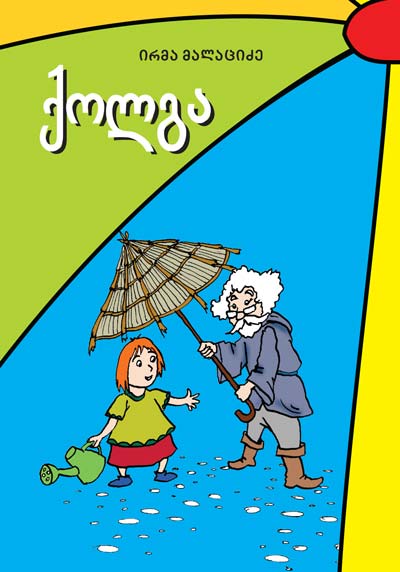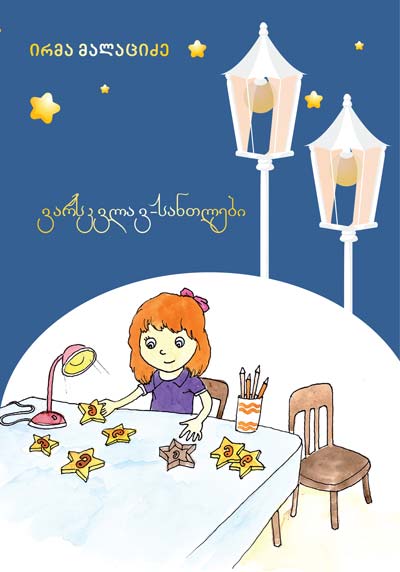By Nikoloz Gogilidze, Chairman, National Intellectual Property Center of Georgia – Sakpatenti, Georgia
Building intellectual property (IP) awareness is a priority for Sakpatenti, Georgia’s intellectual property office. Ensuring that members of the public have an understanding of the IP system and the economic importance of IP rights is critical in helping to create an enabling environment for business and economic growth.

Sakpatenti, has developed a series of colorful educational materials
to raise IP awareness among young people
(photos: Courtesy of Sakpatenti).

If we are to succeed in realizing the country’s innovative and creative potential through effective use of IP, we need to change people’s attitudes toward innovation and the incentives and safeguards that IP rights provide. And we need to promote understanding of the concrete benefits that can flow from effective use of these rights. While laws, regulations and efficient enforcement mechanisms are all necessary, they do not in themselves cultivate respect for IP among the general public. We need to win their hearts and minds.
And what better way to do this than to reach out to schoolchildren? After all, it is far easier to build understanding of the role of IP in supporting innovation and creativity and to engender greater respect for IP rights at an early age than it is to change deep-rooted misperceptions down the line. That is why Sakpatenti recently developed and launched a special educational project for primary schoolchildren. Our aim in doing so is both to inspire children about innovation and its limitless possibilities and to build respect for IP rights.
Having fun with intellectual property
We launched our special IP program for schoolchildren against a backdrop of ambitious educational reform by the Georgian Government toward a dynamic, learner-centered education model. We soon realized that communicating the right messages to schoolchildren in an appropriate way is no easy task. The real challenge is finding a way to craft and communicate key messages about intellectual property in a way that makes the children’s learning experience enjoyable and fun.
That is why we teamed up with the United States Agency for International Development (USAID) and its Georgia Primary Education Project (G-PriEd). The G-PriEd team included professional school teachers and writers tasked with developing reading materials for primary schoolchildren (grades 1-6). With their help, and the invaluable contribution of children’s author Irma Malatsidze and children’s illustrator Zurab Zulakauri, we were able to develop a series of illustrated fairy tales along with in-class exercises and lesson plans for pupils in grades 3-5. And they have been a real hit!
The materials include five stories around the themes of copyright, trademarks and patents: Doremius Solasi (copyright), Star Candles (trademarks), Umbrella, Washing Machine and Compass (inventors and patents).
About the stories
The themes of innovation and creativity and their protection run through the stories, each of which plays out in a different fairy-tale land. The first country, Intellectiana, actively encourages innovation and creativity, and its inhabitants benefit greatly from cutting-edge technologies and a thriving cultural scene. The second, Smartliana (smartali means “law” in Georgian), is a country where innovation is valued and protected. Its citizens are widely recognized as fair-minded and ardent advocates of the rule of law. And the third, Mokobriana (mekobre means “pirate” in Georgian), is rife with pirates and other infringers of IP rights.
As the story unfolds, however the Mokobianan citizens wake up to the importance of IP and its economic and social benefits. They even put in place an IP system that ensures inventors and creators can earn a fair living from their talent and members of the public benefit from their work. And as they raise awareness of and build respect for IP rights, everyone begins to benefit from the country’s thriving economy. As with all fairy tales, each has a happy ending. And while they may oversimplify complex reality, they offer a useful and compelling way to get youngsters thinking about IP and its role in supporting innovation and creativity and in boosting economic growth.
The stories are now part of the supplementary reading materials made available to primary schoolchildren, and so far have been distributed to more than 500 public schools across the country. They are also available online at www.kargiskola.ge and http://Sakpatenti.org.ge/ka/publications.
The materials also feature prominently in Sakpatenti’s World Intellectual Property Day outreach activities. For example, for the 2017 World IP Day campaign, we launched a series of supplementary educational materials based on the tales around the campaign theme, Innovation – Improving Lives. These materials, which also featured landmark innovations from Sakpatenti’s website, seek to increase pupils’ understanding of the impact that inventions have on daily life and their contribution to technological progress.
Lessons learned
Our experience in rolling out the program highlighted the importance of including teaching professionals in the development and implementation process as well as the need to agree on specific messages and content well in advance. Without our team of talented and highly skilled professionals, we would not have been able to deliver the full set of program materials.
We learned that simply developing reading materials and delivering them to schools is not enough. Complementary lesson plans are essential if teachers are to effectively communicate the messages embedded in the stories to their classes. Our experience also underscored the importance of ensuring that teachers have a basic knowledge of IP, its role and importance. Only when armed with such understanding are teachers able to effectively manage and conduct lessons on topics relating to IP and achieve desired outcomes.
Impact and outcomes
The project’s initial impact has been impressive. Students have actively engaged with these materials which have sparked many lively discussions around innovation, creativity and intellectual property. They have been quick to understand why innovation and the IP rights that protect it are so important. But building respect for IP among young people is a continuous process that requires long-term commitment. That is why public outreach is among Sakpatenti’s top priorities.
Plans for the future
Sakpatenti continues to build on its recent successes and to expand the range of IP-related materials available to pupils of all ages. Board games, quizzes and various other activities designed to inspire students and help them learn about IP are being planned.
Through Sakpatenti’s recently established National Intellectual Property Training Center, and in partnership with the WIPO Academy, we are working to further extend our educational outreach. For example, we are putting together various in-class and distance learning opportunities for college students, teachers and law enforcement professionals to enhance their knowledge of IP.
Young people are our future. Among them are tomorrow’s inventors, creators, entrepreneurs and decision-makers. That is why it is so important for us to engage with them and cultivate their understanding of the role IP can play in fostering innovation, creativity and economic performance.


